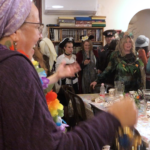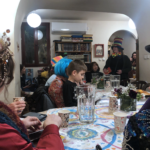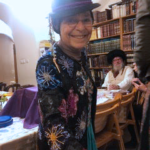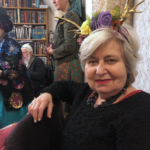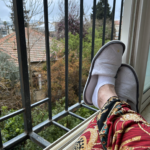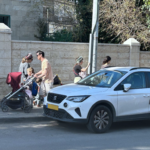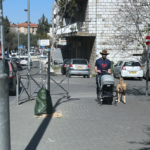The film “Oppenheimer” is a historical drama that chronicles the life of Robert Oppenheimer, the scientist who oversaw the development of the atomic bombs dropped on Hiroshima and Nagasaki during World War II. The movie provides an in-depth look at the complex world of scientific inquiry and the challenges of creating such powerful weapons. Additionally, it delves into the political influences that shaped Oppenheimer’s life after 1954.
Political Intrigues and Allegations
As I watched the movie, Oppenheimer’s character became increasingly mysterious. The film raised questions about his political affiliations and whether he shared atomic secrets with the USSR. It also explored his extramarital affair and the tragic passing of his mistress, adding layers of complexity to his character. Throughout the film, Oppenheimer’s demeanour remained unreadable, making it challenging for viewers to understand his true nature. Struggling to grasp the movie, I searched online for more insights.
In an enlightening interview, JNS editor-in-chief Jonathan Tobin spoke with historian Harvey Klehr, an expert on Soviet spies in the U.S. during that period. Klehr’s insights revealed the Soviet interest in espionage, particularly regarding the Manhattan Project since the 1930s. This background shed light on the historical events and personal choices that shaped Oppenheimer’s legacy.
Before World War II, many Americans, including Oppenheimer’s students at Berkeley University and his friends and relatives, were attracted to the ideals of the Soviet International Communist Party and its utopian Marxist ideology. Notably, Oppenheimer’s wife’s second husband fought and died in the Spanish Civil War to support the communist cause. Furthermore, there were suspicions surrounding Oppenheimer himself, who was believed to be affiliated with the communist party, and information that was likely in the FBI’s possession when he assumed leadership of the Manhattan Project.
Soviet archives indicate a persistent interest in obtaining information about the atomic bomb project dating back to the 1930s. Reports from Klehr suggest that individuals within the United States, spying for the Russians, had successfully infiltrated the U.S. federal government both before and after the war—a concern paralleling contemporary worries about Chinese communist infiltration.
Despite these associations, FBI wiretaps released from that era reveal Oppenheimer’s deliberate distancing from communist ties once he assumed control of the project, thwarting Soviet attempts to secure his cooperation. Understanding this historical backdrop is crucial given that, in 1941, many were oblivious to Stalin’s true nature as a communist leader. *1
Espionage and Betrayal
Recognizing the depth of communist influence and espionage during that period offers valuable insights into the intricate geopolitical dynamics of the time. It is a cautionary tale, underscoring the potential consequences of communist ideologies and covert activities.
The film also uncovers the presence of not one but two scientist spies embedded within the Manhattan Project. Ted Hall, a remarkably talented graduate student, was recruited at eighteen through his Harvard professors. Surrounded by card-carrying communists as roommates, he independently chose to divulge atomic secrets to the Soviets. Hall believed that a shared possession of the nuclear bomb would contribute to a “safer world.” A recent documentary titled “The Compassionate Spy” delves into Hall’s story, defending his decision to share crucial atomic information with the Soviets. His apology, featured in The New York Times Magazine under “The Boy Who Gave Away The Bomb,” provides further insight.
The second spy, Klaus Fuchs, assumed leadership in the British atomic lab post-World War II. Operating as a double agent, Fuchs was eventually apprehended and served time in jail.
In the third hour of the movie, Oppenheimer’s alleged spying and the loss of his security clearance in 1954 are portrayed. However, an article from September 1977 in the Bulletin of the Atomic Scientists provides a more nuanced perspective. According to an eyewitness, the motives behind Oppenheimer’s security clearance revocation were more complex than previously thought. The article suggests that Oppenheimer’s security clearance was revoked because he had opposed the development of the hydrogen bomb, which put him at odds with the military establishment.
The film “Oppenheimer” offers a fascinating insight into the life of one of the most controversial figures in modern history. It highlights the intricate geopolitical dynamics of the time and the potential consequences of political ideologies and covert activities.
Sadly, Oppenheimer’s life story is relevant to our current political predicaments. Oppenheimer was destroyed by a political movement characterized by rank know-nothing, anti-intellectual, xenophobic demagogues. The witch-hunters of that season are the direct ancestors of our current political actors of a specific paranoid style… Oppenheimer did not regret what he did at Los Alamos; he understood that you cannot stop curious human beings from discovering the physical world around them. One cannot halt the scientific quest, nor can one un-invent the atomic bomb but it is up to each and every one of us to ensure that our current technologies are integrated by our leaders into a sustainable and humane civilization. (Kai Bird *1)
Contemporary Relevance
The underlying message about the importance of responsible governance and ethical technology stewardship remains relevant. Similar dynamics are at play in current politics, including the tactics employed by the Chinese Communist Party and the Democratic People’s Republic of Korea to maintain control over their populations, including the establishment of concentration camps for dissenters and those who hold independent beliefs or affiliations. Additionally, American historian Timothy Snyder, who focuses on Eastern Europe and the Soviet Union, has pointed out the similarities between Putin’s actions and Stalin’s methods during an interview in 2023.
Despite the evidence of human rights abuses and political repression committed by these governments, some Western academics continue to downplay the brutality of these regimes and defend their actions. This is particularly true of those who lean left and admire a particular political party. But there are those like Harold P. Green, who discusses “The Oppenheimer Case,” published in the Bulletin of the Atomic Scientists, which examines the Oppenheimer case as an example of the abuse of law. The article highlights the dangers of ignoring human rights abuses and downplaying the motives behind political repression.
Yishai Rebo’s latest chant, “Ata Zocher,” reflects the themes explored in the film “Oppenheimer.” In it, he offers a poignant reflection on the complexity of human endeavours, the weight of responsibility, and the enduring quest for understanding. As we unravel Oppenheimer’s story, we confront the spectre of espionage, navigating a landscape fraught with ambiguity and intrigue. Yet amidst the shadow of suspicion, Oppenheimer emerges as a figure emblematic of ethical quandaries and the enduring struggle for ethical stewardship of technology. Through the lens of Yishai Rebo’s transcendent chant, we find solace in the pursuit of understanding, redemption, and the enduring quest for truth.
“You (G-d) remember all the workings of the universe
And you note all the creatures of this world
All events and mysteries are revealed to you
Because there is nothing forgotten before Your Holy Throne
Or hidden from your gaze.”
Footnotes:
- “Holodomor.” Encyclopedia Britannica, 2 Jan. 2024, www.britannica.com/event/Holodomor.
- Bird, Kai. “American Prometheus: The Triumph and Tragedy of J. Robert Oppenheimer.” The New York Times, 2023, July 17. www.nytimes.com


